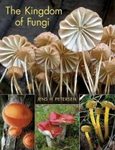About this book
The systematics of species of Hypocrea with green ascospores and their Trichoderma anamorphs is presented. Multiple phenotypic characters were analysed, including teleomorph and anamorph, as well as colony morphology and growth rates at various temperatures. In addition, phylogenetic analyses of two genes, the RNA polymerase II subunit (RPB2) and translation elongation factor 1-alpha (EF-1a), were performed. These analyses revealed that species of Hypocrea with green ascospores and Trichoderma anamorphs are derived from within Hypocrea but do not form a monophyletic group. Therefore, Creopus and Chromocrea, genera formerly segregated from Hypocrea only based on their coloured ascospores, are considered synonyms of Hypocrea. The present study showed that phenotypic characters alone are generally not helpful in understanding phylogenetic relationships in this group of organisms, because teleomorph characters are generally highly conserved and anamorph characters tend to be morphologically divergent within monophyletic lineages or clades. The species concept used here for Hypocrea/Trichoderma is based on a combination of phenotypic and genotypic characteristics.
In this study 40 species of Hypocrea/Trichoderma having green ascospores are described and illustrated. Dichotomous keys to the species are given. The following species are treated (names in bold are new species or new combinations): H. albocornea, H. atrogelatinosa, H. aureoviridis/T. aureoviride, H. candida/T. candidum, H. catoptron/T. catoptron, H. centristerilis, H. ceracea/T. ceraceum, H. ceramica/T. ceramicum, H. chlorospora/T. chlorosporum, H. chromosperma/T. chromospermum, H. cinnamomea/T. cinnamomeum, H. clusiae, H. cornea, H. costaricensis, H. crassa/T. crassum, H. cremea/T. cremeum, H. cuneispora/T. cuneisporum, H. estonica/T. estonicum, H. gelatinosa/T. gelatinosum, H. gyrosa, H. lixii/T. harzianum, H. macrospora, H. melanomagna/T. melanomagnum, H. nigrovirens/T. nigrovirens, H. phyllostachydis/T. phyllostachydis, H. rugulosa, H. sinuosa/T. sinuosum, H. spinulosa, H. straminea/T. stramineum, H. strictipilosa/T. strictipile, H. substipitata, H. sulawesensis, H. surrotunda/T. surrotundum, H. tawa/T. tawa, H. thailandica/T. thailandicum, H. thelephoricola/T. thelephoricola, H. tuberosa, H. velenovskyi, H. virens/T. virens, and H. virescentiflava. The following species are excluded: H. andinogelatinosa, H. dacrymycella, H. dichromospora, H. palmicola, H. pseudogelatinosa, H. subalbocornea, H. subatrogelatinosa, H. tropicosinensis, H. viscidula, H. viridis, and Chromocrea leucostroma.
Customer Reviews




































